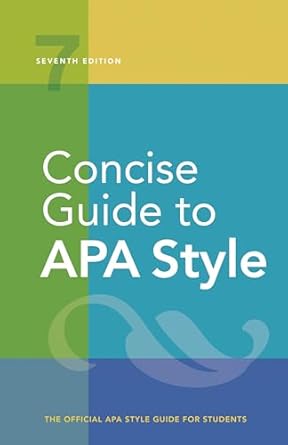[toc]
abbreviations guide clear academic writing
Concise Guide to APA Style: 7th Edition (OFFICIAL)
Page 136 Review
Understanding Abbreviations in Academic Writing: A Critical Review
This excerpt from a style guide provides crucial information on the proper use of abbreviations in academic writing.
It emphasizes clarity, consistency, and the importance of defining abbreviations appropriately.
Defining Abbreviations in Text
The core principle outlined is that any term to be abbreviated must be fully defined upon its first appearance.
As the text states:
“When you first use a term that you want to abbreviate in the text, present both the full version of the term and the abbreviation.”
This is a fundamental rule to ensure the reader understands the abbreviation’s meaning from the outset.
The guide further clarifies:
“When the full version of a term appears for the first time in a heading, do not define the abbreviation in the heading; instead, define the abbreviation when the full version next appears.
Use abbreviations in headings only if the abbreviations have been previously defined in the text or if they are listed as terms in the dictionary.”
This highlights the importance of defining abbreviations in the main text, even if the full term is used in a heading.
Headings should not rely on abbreviations that haven’t been introduced properly.
Placement of Abbreviations
The excerpt provides specific guidance on how to present the abbreviation in relation to the full term:
“When the full version of a term first appears in a sentence in the text, place the abbreviation in parentheses after it.”
Example: “attention-deficit/hyperactivity disorder (ADHD)”
For parenthetical text, a slightly different approach is recommended:
“When the full version of a term first appears in parenthetical text, place the abbreviation in square brackets after it.
Do not use nested parentheses.”
Example: “(i.e., attention-deficit/hyperactivity disorder [ADHD])”
The avoidance of nested parentheses is a key stylistic point, improving readability.
The example illustrates how to handle abbreviations within parenthetical statements clearly.
Citations and Abbreviations
The guide also addresses how to incorporate citations with abbreviations:
“If a citation accompanies an abbreviation, include the citation after the abbreviation, separated with a semicolon.
Do not use nested or back-to-back parentheses.”
Example: “Beck Depression Inventory-II (BDI-Il; Beck et al., 1996)”
This rule maintains clarity by separating the abbreviation from the citation using a semicolon.
Again, the emphasis is on avoiding complex or confusing parenthetical structures.
Abbreviations in Tables and Figures
A crucial point is made about the independence of tables and figures:
“Define abbreviations used in tables and figures within each table and figure, even if the abbreviations have already been defined in the text.
The abbreviation can appear in parentheses after first use of the term within the table or figure, including in the table or figure title, or the definition can appear in a table or figure general note or a figure legend.
If an abbreviation is used in multiple tables and figures, define it in each table or figure.”
This highlights that each table and figure should be self-contained in terms of abbreviation definitions.
Repetition is preferred over ambiguity.
The guide further clarifies:
“Do not define abbreviations that do not appear in a table or figure.
Do not define or write out standard abbreviations for units of measurement and statistics in a table or figure (see Sections 6.10 and 7.15).”
This emphasizes relevance and avoids unnecessary definitions.
Standard abbreviations for units of measurement and statistics are considered universally understood and do not require explicit definition.
Plural Forms of Abbreviations
Finally, the guide touches on the formation of plural abbreviations:
“To form the plural of most abbreviations and statistical symbols, add a lowercase “s” alone, without an apostrophe.”
Example: “DOIs, URS”
This is a simple but important rule for maintaining consistency and avoiding common errors like using an apostrophe to indicate plurality.
Conclusion
This excerpt provides a concise yet comprehensive guide to the proper use of abbreviations in academic writing.
By adhering to these rules, writers can ensure clarity, consistency, and professionalism in their work, thereby facilitating effective communication of complex ideas.
The emphasis on defining abbreviations upon first use, avoiding nested parentheses, and treating tables and figures as independent units are particularly important takeaways.
Buy full ebook for only $18: https://www.lulu.com/shop/american-psychological-association/concise-guide-to-apa-style-7th-edition-official/ebook/product-rmzpq54.html?page=1&pageSize=4
Abbreviations Guide Clear Academic Writing
Read more: Writing Style & Grammar: Book Excerpt Review</
Read more: Book Reference Examples: A Comprehensive Guide</


Leave a Reply